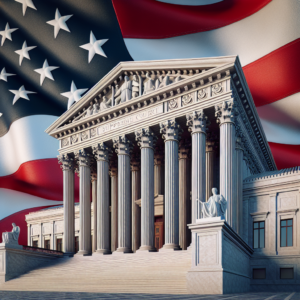Unraveling the Truth: Shocking New Developments in Criminal Cases
In recent months, the landscape of criminal investigations has been dramatically reshaped by a series of shocking developments that have captured public attention and reignited debates about justice and truth. From unexpected breakthroughs in long-cold cases to the application of cutting-edge forensic technologies, the criminal justice system is undergoing significant transformations. This article delves into the latest advancements in high-profile criminal investigations, the role of modern forensic techniques, and the broader implications these changes hold for law enforcement and society at large.
Unveiling the Latest Breakthroughs in High-Profile Criminal Investigations
Recent months have seen a flurry of breakthroughs in high-profile criminal investigations that have not only resolved longstanding mysteries but also raised questions about the efficacy of traditional investigative methods. Notable cases, such as the resolution of the 2004 disappearance of a young woman in California, have been reinvigorated by the re-examination of evidence through modern techniques. Law enforcement agencies are increasingly turning to cold case units, employing fresh eyes and innovative approaches to solve crimes that have remained unsolved for years. These developments underscore a growing recognition that the pursuit of justice is an ongoing endeavor, one that can benefit from the integration of new methodologies and perspectives.
Analyzing the Impact of New Forensic Technologies on Criminal Case Resolutions
The advent of new forensic technologies has revolutionized the way criminal cases are investigated and resolved. Techniques such as DNA phenotyping, advanced ballistics analysis, and digital forensics have provided law enforcement with tools that were unimaginable just a few decades ago. For instance, DNA analysis has become a cornerstone of modern criminal investigations, allowing for the identification of suspects with unprecedented accuracy. Moreover, the use of artificial intelligence in analyzing vast amounts of data has enabled investigators to uncover patterns and connections that may have previously gone unnoticed. These advancements not only enhance the likelihood of solving cases but also contribute to the exoneration of wrongfully convicted individuals, highlighting the dual potential of forensic science to both convict the guilty and protect the innocent.
Case Studies: How Recent Evidence Has Altered the Course of Justice
Several recent case studies illustrate the profound impact that new evidence and forensic techniques can have on the course of justice. One striking example is the case of the “Golden State Killer,” whose identity remained a mystery for decades until genealogical DNA testing led to the arrest of Joseph DeAngelo in 2018. This case not only exemplifies the power of modern forensic science but also raises ethical questions about privacy and the use of genetic databases. Another notable case is that of Adnan Syed, whose conviction for murder was overturned after new evidence emerged, prompting a reevaluation of the original trial’s integrity. These cases demonstrate that the pursuit of truth is often a complex and evolving process, influenced by advancements in technology and shifts in societal attitudes toward justice.
The Role of Media Coverage in Shaping Public Perception of Criminal Cases
Media coverage plays a crucial role in shaping public perception of criminal cases, often influencing the narrative surrounding investigations and trials. High-profile cases, in particular, attract significant media attention, which can lead to heightened public interest and scrutiny. While media coverage can serve as a tool for transparency and accountability, it can also perpetuate biases and sensationalism that distort the truth. The case of the “Trial of the Century” in the 1990s, involving O.J. Simpson, exemplifies how media narratives can overshadow legal proceedings and impact jury selection. As the line between news and entertainment continues to blur, the responsibility of the media to report accurately and ethically has never been more critical in the context of criminal justice.
Ethical Considerations in the Pursuit of Truth in Criminal Investigations
The pursuit of truth in criminal investigations is fraught with ethical considerations that must be navigated carefully by law enforcement and legal professionals. The use of advanced forensic technologies raises questions about consent, privacy, and the potential for misuse of sensitive information. Moreover, the pressure to solve cases quickly can lead to rushed investigations and the possibility of wrongful convictions. Ethical frameworks must be established to guide the use of new technologies, ensuring that the rights of individuals are respected while also upholding the integrity of the justice system. Balancing the need for effective law enforcement with the protection of civil liberties is a challenge that requires ongoing dialogue and vigilance.
Future Implications: What These Developments Mean for Law Enforcement and Society
The recent developments in criminal investigations signal a transformative era for law enforcement and society as a whole. As forensic technologies continue to evolve, they promise to enhance the accuracy and efficiency of investigations, potentially leading to higher rates of solved cases and greater public confidence in the justice system. However, these advancements also necessitate a reevaluation of existing legal frameworks and ethical standards to address the challenges they present. The implications extend beyond the courtroom; they influence societal perceptions of justice, accountability, and the role of technology in our lives. As we move forward, it is imperative that law enforcement agencies, policymakers, and communities engage in constructive dialogue to ensure that the pursuit of truth remains a cornerstone of our criminal justice system.
In conclusion, the recent shocking developments in criminal investigations highlight the dynamic interplay between technology, ethics, and public perception in the pursuit of justice. As breakthroughs continue to emerge, they not only reshape individual cases but also redefine the broader landscape of law enforcement and societal expectations. The journey toward unraveling the truth is ongoing, and it is essential that all stakeholders remain committed to fostering a just and equitable system that prioritizes both the pursuit of truth and the protection of individual rights.

























